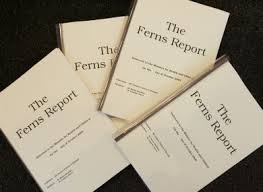At the end of January Anne Enright was named the inaugural Laureate for Irish Fiction by the Arts Council of Ireland. In light of her recent achievement I have decided to write a blog pertaining to her Booker Prize novel The Gathering. I will outline reasons as to why fictional writing becomes an effective method of narrative, as opposed to non-fictional writing, when depicting painful past experiences.
The Gathering is narrated in the first person by a woman named Veronica Hegarty, whose family has gathered in Dublin for the funeral of their brother Liam, an alcoholic, who committed suicide in England. Whilst giving a testimony of why Veronica believes her brother killed himself, the reader is led to believe that Liam and to some extent Veronica herself are victims of sexual abuse. Although, this aspect of the story is not revealed immediately, Veronica makes her intentions clear at the beginning of the novel, “I need to bear witness to an uncertain event” (Enright 1).  This event is of course the molestation of Liam by her grandmother’s Landlord, Lamb Nugent, an event witnessed by Veronica herself. The story centres on Veronica’s attempt to uncover the truth of both her and Liam’s traumatic experience by delving into past events and supposing to write down her findings. By reconstructing her past, Veronica’s present day life comes under self-scrutiny and she begins to question her very existence within society. Anne Enright’s The Gathering portrays a comprehendible understanding of child sexual abuse both personally and in a wider social context by fictionalizing her protagonist’s narrative.
This event is of course the molestation of Liam by her grandmother’s Landlord, Lamb Nugent, an event witnessed by Veronica herself. The story centres on Veronica’s attempt to uncover the truth of both her and Liam’s traumatic experience by delving into past events and supposing to write down her findings. By reconstructing her past, Veronica’s present day life comes under self-scrutiny and she begins to question her very existence within society. Anne Enright’s The Gathering portrays a comprehendible understanding of child sexual abuse both personally and in a wider social context by fictionalizing her protagonist’s narrative.
By fictionalizing a story about child abuse, it allows such events to be expressed, explored, and examined in a way which is more meaningful and understandable than, for example, a report on sexual abuse. The reason why is victim’s like Veronica often suffer from post-traumatic stress disorder and in order to overcome this must give testimony to the event or events causing their distress. However, testimonies involving traumatic events are often laden with uncertainties and riddled with gaps (Amico 60). Veronica bears witness to this herself “I need to bear witness to an uncertain event. This thing may not have taken place” (Enright 1). In the next page Veronica goes a step further and decides to tell the reader that “she does not know how to tell the truth, and that all she has are stories” (2). Thus Veronica is left with no other choice but to reconstruct the traumatic events of Liam’s molestation, from fragmented memories and imaginings, therefore fictionalizing her ordeal. Now that Veronica finally finds the need to bring these memories to the fore, due to the death of her brother, she reconstructs such events by making them up. She begins by reconstructing the story of how her brother’s abuser Mr Nugent, first entered the Hegarty family circle by falling in love with their grandmother, Ada Merriman. In relation to their relationship, many of the scenes concerning Nugent and Ada are made up and consist only of speculative events. This is apparent in veronica’s use of language, “We read of what Veronica thinks might have happened, of what could have happened, or of what to her somehow feels like the truth of what happened” (Amico 61). Fictionalizing these stories help Veronica believe in her power of reconstructing her past, and make it easier to part some blame on Ada for allowing Nugent molest Liam while under her care. Furthermore, owing to Veronica’s reconstructing of such events she essentially encourages the reader to consider that Nugent either abuses Liam in revenge against Ada for withholding herself from him, or because he enjoys demonstrating his power over her and Charlie as their landlord. Due to her sense of having been betrayed by her grandmother, Veronica imagines that Ada was a prostitute before marrying Charles. Although the reader acknowledges this to be more fantasy than fact, the image helps the reader adopt the same feelings of animosity Veronica has towards her grandmother.
Now that Veronica finally finds the need to bring these memories to the fore, due to the death of her brother, she reconstructs such events by making them up. She begins by reconstructing the story of how her brother’s abuser Mr Nugent, first entered the Hegarty family circle by falling in love with their grandmother, Ada Merriman. In relation to their relationship, many of the scenes concerning Nugent and Ada are made up and consist only of speculative events. This is apparent in veronica’s use of language, “We read of what Veronica thinks might have happened, of what could have happened, or of what to her somehow feels like the truth of what happened” (Amico 61). Fictionalizing these stories help Veronica believe in her power of reconstructing her past, and make it easier to part some blame on Ada for allowing Nugent molest Liam while under her care. Furthermore, owing to Veronica’s reconstructing of such events she essentially encourages the reader to consider that Nugent either abuses Liam in revenge against Ada for withholding herself from him, or because he enjoys demonstrating his power over her and Charlie as their landlord. Due to her sense of having been betrayed by her grandmother, Veronica imagines that Ada was a prostitute before marrying Charles. Although the reader acknowledges this to be more fantasy than fact, the image helps the reader adopt the same feelings of animosity Veronica has towards her grandmother.
 The Ferns Report published in 2005 gives vivid details of clerical sexual abuse on young children, and presents facts in the form of data, rather than fictional narrative. Unlike, the Ferns Report, Enright’s novel explores a personal voice that connects the writer, the reader and the novel’s protagonist on a level more compelling than any report could. By continually exposing the reader to Veronica’s attempts to define herself through all the confusion of traumatic memory, Enright actually invites the reader to partake in the protagonist’s gruelling struggle to make sense of it all (Harte 192), thus making the experience a more personal one.
The Ferns Report published in 2005 gives vivid details of clerical sexual abuse on young children, and presents facts in the form of data, rather than fictional narrative. Unlike, the Ferns Report, Enright’s novel explores a personal voice that connects the writer, the reader and the novel’s protagonist on a level more compelling than any report could. By continually exposing the reader to Veronica’s attempts to define herself through all the confusion of traumatic memory, Enright actually invites the reader to partake in the protagonist’s gruelling struggle to make sense of it all (Harte 192), thus making the experience a more personal one.
Roland Barthes believed that “narratives did not directly represent reality” (Allen, 59), this conception can be compared to Enright’s notion “that language was already an act of translation from the real” (Bracken and Cahill 31), and that “once you’ve made that leap anything goes” (31). By comparing both statements, a direct connection can be made as to why Enright might have chosen to write fiction rather than non-fiction. The reason being she believes both fiction and non-fiction to be similar in that both narratives generate the illusion of reality, rather than portray reality itself (59). Narratives, whether fictional or non-fictional do not reach the reader directly, nor do they directly represent the world, because language has already gone through the act of translation making a narrative at best an indirect representation of reality. So the question remains, why choose fiction over non-fiction? Since Enright probably sees no real differentiation between the two, at least in relation to representing reality and searching for the truth, we must look at the advantages fiction has over its counterpart.  The Gathering deals primarily with issues of post-traumatic stress disorder, as seen in the character of Veronica. It can be argued that when Veronica fictionalized parts of her past that were hard for her to process, it became possible for her to understand and remember details of her past that otherwise would have remained inaccessible and unprocessed. She believes persons whose lives fall apart early on are lucky in the sense that they can put it back together again. But those who are always on the brink of crisis, who don’t hit rock bottom, are the ones in trouble. Here, Enright’s personal experience is fictionalized, so as to allow the reader access the conscious mind of a person who has gone through a breakdown in the same way Veronica has. The fictionalisation of a traumatic narrative allows greater scope for widespread understanding owing to the fact that fictional characters are under no restrictions to truthfully represent a particular individual.
The Gathering deals primarily with issues of post-traumatic stress disorder, as seen in the character of Veronica. It can be argued that when Veronica fictionalized parts of her past that were hard for her to process, it became possible for her to understand and remember details of her past that otherwise would have remained inaccessible and unprocessed. She believes persons whose lives fall apart early on are lucky in the sense that they can put it back together again. But those who are always on the brink of crisis, who don’t hit rock bottom, are the ones in trouble. Here, Enright’s personal experience is fictionalized, so as to allow the reader access the conscious mind of a person who has gone through a breakdown in the same way Veronica has. The fictionalisation of a traumatic narrative allows greater scope for widespread understanding owing to the fact that fictional characters are under no restrictions to truthfully represent a particular individual.
An author does not have to produce a history or a biography in order to portray the truth. Veronica’s telling of day to day activities like interacting with her children, sleeping with her husband and driving her car help the reader to relate to the fictional world created by Enright. Within this fictional world, a reader will often obtain a better understanding of reality, than they would from a text such as an actual testimony or memoir, which purport to reference reality directly, a concept thought fraudulent by Enright.
Works Cited
Allen, Graham. Roland Barthes. London: Routledge, 2003.
Amico, Carol Dell. “Anne Enright’s The Gathering: Trauma, Testimony, Memory.” New Hibernia Review (2010): 59-73.
Bracken, Claire and Susan Cahill. “An Interview with Anne Enright.” Bracken, Claire and Susan Cahill. Anne Enright. Dublin: Irish Academic Press, 2011. 31.
Enright, Anne. The Gathering. London: Jonathan Cape, 2007.
Harte, Liam. “Mourning Remains Unresolved: Trauma and Survival in Anne Enright’s The Gathering.” Literature Interpretation Theory (2010): 187-204.
